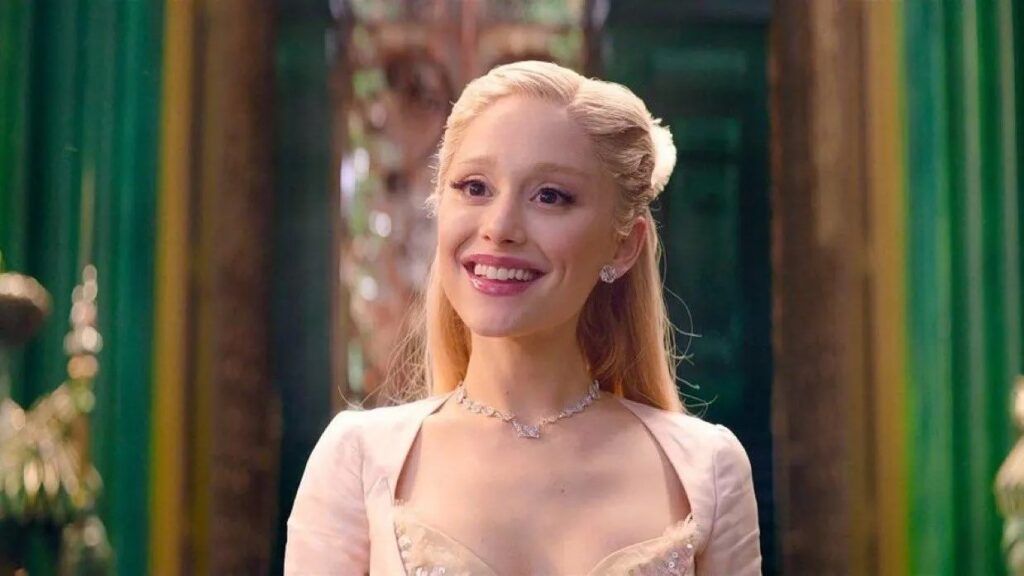Wicked: For Good is heavily tied to The Wizard of Oz (1939), to the point where the original film is worth watching first. Wicked: For Good completes the story of Elphaba (Cynthia Erivo) that started in Wicked, cementing her reputation as the Wicked Witch of the West, while Glinda the Good (Ariana Grande) learns to live up to her name. Do You Need To Watch ‘The Wizard of Oz’ Before ‘Wicked: For Good’? It certainly helps-Wicked: For Good assumes that viewers are very familiar with the events of The Wizard of Oz. If you’ve never seen the original film, you might struggle to understand certain parts of the story. Thankfully, The Wizard of Oz still holds up-there’s a reason the classic musical is viewed as one of the most iconic films to ever emerge from Hollywood. The late, great director David Lynch was famously obsessed with the film, and its influence can still be felt in stories told today. The Wizard of Oz is based on L. Frank Baum’s 1900 book The Wonderful Wizard of Oz. With his book, Baum aimed to create an original American fairytale, and deliberately wrote simple characters, some defined by a single trait-Dorothy is good and the Wicked Witch is evil-the 1939 film maintained this dynamic (Glinda was always a side-character in both). Wicked and Wicked: For Good are both based on the second highest-grossing Broadway musical of all time, which is an adaptation of Gregory Maguire’s 2000 novel, Wicked. Maguire’s novel aimed to deconstruct the events of The Wizard of Oz, asking how the Wicked Witch came to be viewed as a one-dimensional villain. Maguire borrowed elements from the Wizard of Oz book and film, creating a morally ambiguous prequel that was never meant to be canon. Wicked: For Good is a retelling of a familiar tale, with a twist. What Is The Plot Of The Original ‘Wizard Of Oz’? The 1939 film sees Dorothy forced out of Kansas after a hurricane lifts her house and drops it into the magical land of Oz. Dorothy’s house accidently crushes the Wicked Witch of the East, oppressor of the Munchkins, and as a reward, Glinda the Good gives Dorothy the witch’s magical ruby slippers (the slippers appear as silver in Wicked: For Good, which is the color from the original novel). Dorothy sets off on the Yellow Brick Road to see the Wizard of Oz and find a way home, but makes three friends along the way-the Scarecrow, Tin Man and Cowardly Lion. The trio all feel that they are lacking something, with Scarecrow seeking a brain, the Tin Man a heart, and the Cowardly Lion, courage. The Wizard tasks the three with slaying the Wicked Witch of the West. They manage to do so by accident-the Wicked Witch sets fire to Scarecrow and Dorothy throws water to put it out, melting the Wicked Witch into a puddle. Returning to the Emerald City for their reward, the three uncover the truth about the Wizard-he’s just an ordinary man from Dorothy’s world. However, the Wizard proves to be a trickster with a heart of gold, giving the Scarecrow, Tin Man and Lion trinkets which fool them into uncovering the positive traits they had all along. The Wizard plans to return Dorothy to Kansas with a hot air balloon, but he is lifted into the air without Dorothy after Toto runs away. Glinda the Good returns to reassure Dorothy that she, just like her companions, had the solution all along, and Dorothy uses the magical slippers to return home. The film frames the entire trip as a dream, contrary to the novel. Wicked: For Good inserts a more complex narrative under the surface of Dorothy’s journey. How ‘Wicked: for Good’ Connects To ‘The Wizard Of Oz’ Wicked: For Good creates origin stories for Dorothy’s three companions, and even explains the hurricane that brought her to Kansas as the work of Madame Morrible (Michelle Yeoh). Warning-spoilers ahead. The Tin Man Elphaba visits her disabled sister, Nessarose (Marissa Bode), who rules Munchkinland, and enchants Nessa’s silver slippers as a good deed, enabling her sister to fly. This backfires after Nessa’s lover, Boq (Ethan Slater) storms out, intimidated by the use of magic. Nessa then uses the Grimmerie, the powerful spellbook of Oz, to enchant Boq’s heart and make him stay with her forever. Nessa botches the spell and shrinks his heart, forcing Elphaba to create a desperate curse to save Boq, transforming him into a metal man with no heart-the Tin Man. The original novel gives the Tin Man a grisly, somewhat similar origin. He falls in love with a servant of the Wicked Witch of the East, and the witch blocks their marriage by cursing his axe, making it cut off a body part with each swing. Over time, his body is replaced piece by piece. The 1939 film does not give the Tin Man an origin, but he does mention that “the tinsmith forgot to give me a heart,” suggesting that he was built. Dorothy’s Arrival, And The Scarecrow’s Origin We only see Dorothy from the back in Wicked: For Good-the protagonist of The Wizard of Oz is flipped into a mysterious agent of chaos who traverses through the land, making huge changes without ever knowing the truth of her actions. Madame Morrible deliberately creates the tornado and drops Dorothy’s house onto Nessarose, murdering her and leading to Glinda giving the silver slippers to Dorothy. This enrages Elphaba, resulting in her and Glinda having a physical fight, broken up by Fiyero (Jonathan Bailey), Glinda’s ex-husband and Elphaba’s true love. Fiyero sacrifices himself to Oz’s guards, allowing Elphaba to escape. Fiyero is beaten almost to death by the guards and hung on a wooden cross, and again, in desperation, Elphaba uses her magic to protect Fiyero from all bodily harm, transforming him into a Scarecrow. In the novel, the Scarecrow is just a scarecrow, and describes himself coming into consciousness as a Munchkin farmer creates his body. The 1939 film does not bother with an origin-the Scarecrow’s romantic backstory with Glinda and Elphaba is solely a Wicked invention. The Cowardly Lion The Cowardly Lion (Colman Domingo) first appears as a cub in Wicked, protected by Elphaba. In Wicked: For Good, this good deed is reframed as a disservice, with Elphaba blamed for the lion growing up to be a coward. It’s unclear if the Cowardly Lion actually believes this, or is too scared to speak up. In the novel, there is no origin story, nor is the Cowardly Lion ever really afraid. In fact, the novel makes it clear that all three companions excel in the exact qualities they believe they lack, but the 1939 film depicts the Cowardly Lion as very cowardly indeed. Oz’s repression of the talking animal population is also an invention of Wicked, reframing the Wizard of Oz into a wicked trickster rather than benevolent liar. The Wizard of Oz Wicked: For Good depicts the Wizard as a villain and ruthless tyrant, who represses the animal population as a means to seize control. The twist ending of For Good reveals that the Wizard is actually Elphaba’s father, who “seduced” Elphaba’s mother using a magic potion that resulted in her green skin. The Wizard is surprised to hear this, and leaves the Land of Oz in shame after Glinda tells him the truth. The original film and novel take a much more sympathetic approach to the Wizard-he’s a shameless huckster who takes advantage of the naivety of Oz’s citizens, but he’s also a good leader and an inspiration to many. In later novels (Baum wrote several sequels), the Wizard returns to the story, and his role in Oz’s history is revealed to be more sinister than it first seems, as he displaced the royal family and placed himself as the ruler of the Land. However, he is never depicted as an outright villain-he’s a kindly trickster, a man who followed his ambition as far as it would go, lying every step of the way. Wicked: For Good ends with Elphaba reunited with Fiyero, fleeing the Land of Oz by crossing a vast, uninhabited desert. This desert doesn’t appear in The Wizard of Oz, but it is part of Baum’s books, and is known as the Deadly Desert. The Deadly Desert surrounds Oz, and is covered with sand that kills all those who touch it, which is clearly not part of Wicked canon. However, the Deadly Desert can be seen in the surprisingly dark sequel to The Wizard of Oz, the 1985 film Return to Oz. If you’ve watched both Wicked films and The Wizard of Oz, give Return to Oz a watch (it’s available to stream on Disney+). Like Wicked: For Good, Return to Oz is a different take on Baum’s world, and is more faithful to the books than the 1939 film.
https://bitcoinethereumnews.com/finance/for-good-connects-to-the-wizard-of-oz/
For Good’ Connects To ‘The Wizard Of Oz’

